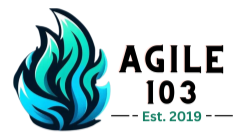Facilitated by Toks B.
Agile development thrives on delivering value quickly, but speed without quality is a recipe for disaster. That’s where test automation frameworks come in.
From an Agilist’s perspective, understanding these frameworks isn’t about writing lines of code, but about enabling teams to build, test, and release with confidence.
Our upcoming session will provide participants with practical knowledge of test automation essentials and how they fit into Agile values, ceremonies, and continuous improvement.
Why Test Automation Frameworks Matter in Agile
Test automation frameworks are structured environments that streamline testing, improve consistency, and reduce manual effort. They matter because they:
-
Support Agile speed and adaptability by enabling rapid regression testing.
-
Encourage collaboration between testers, developers, and product owners.
-
Enhance quality metrics that support “Definition of Done.”
-
Provide scalability so that testing grows with product complexity.
For more background on why testing is critical in Agile, see Atlassian’s Agile Testing overview.
Core Types of Test Automation Frameworks
-
Linear Frameworks
Simple record-and-playback approaches suitable for small teams or straightforward test cases. -
Modular Frameworks
Break tests into reusable modules, encouraging maintainability. -
Data-Driven Frameworks
Separate test scripts from data, increasing flexibility for broader coverage. -
Keyword-Driven Frameworks
Empower non-technical team members by using keywords to define tests. -
Hybrid Frameworks
Combine strengths of multiple approaches, offering both scalability and adaptability.
For a concise breakdown, check BrowserStack’s guide to test automation frameworks.
Agilist’s Role in Test Automation
Agile leaders don’t need to be automation engineers, but they do play a role in shaping test strategies:
-
Facilitating Collaboration: Encouraging testers and developers to co-own automation.
-
Linking Frameworks to Value: Mapping automated tests to business outcomes and user stories.
-
Ensuring Feedback Loops: Aligning automated test results with sprint reviews and retrospectives.
-
Driving Continuous Improvement: Regularly reviewing framework efficiency in retrospectives.
Harvard Business Review emphasizes the leadership role in enabling tech adoption.
Common Challenges and How to Overcome Them
-
High Initial Setup Costs – Mitigate by starting small and scaling gradually.
-
Team Resistance – Tackle with coaching, training, and showcasing quick wins.
-
Maintenance Overhead – Schedule dedicated time in sprints for framework upkeep.
-
Tool Overload – Choose tools that integrate well with your Agile toolchain (e.g., Jira, CI/CD).
For guidance on selecting tools, see ThoughtWorks Technology Radar.
Preparing for the Session
-
Refresh knowledge of Agile testing strategies (Ministry of Testing).
-
Bring examples of your current testing challenges.
-
Be ready to collaborate in live exercises simulating framework selection and application.
Join our Introduction to Test Automation Frameworks (Agilist’s Perspective) session to learn how frameworks can accelerate delivery, improve collaboration, and strengthen quality in Agile teams. Don’t just deliver faster—deliver smarter.
Register today.
Equip yourself with the insights to guide teams toward effective test automation adoption.
